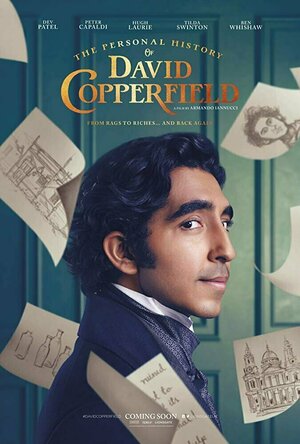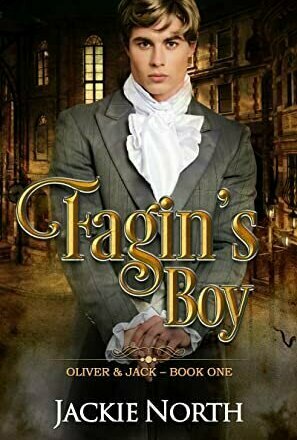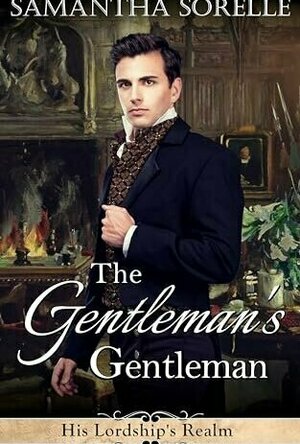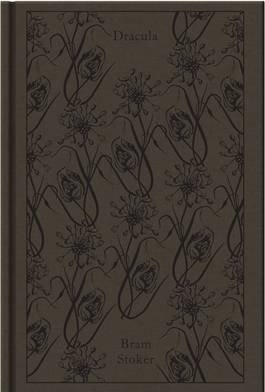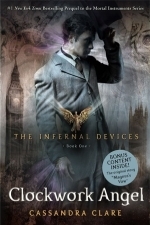Lee (2222 KP) rated The Personal History of David Copperfield (2019) in Movies
Jan 26, 2020
Dev Patel stars as Copperfield, the star and narrator of the story which charts his personal rise from rags to riches during Victorian England. We begin though with Copperfield as an adult, recounting his life story to a small theatre audience as he steps into a painted backdrop behind him on stage, transporting him, and us, to the location of his birth. He enters the family home and continues to narrate from within the scene as his mother struggles with labour. It’s just one of a variety of wonderfully inventive storytelling devices that the movie employs throughout.
While the chaos of childbirth plays out, the first in a long line of star-studded supporting characters arrives, David’s eccentric Aunt Betsey (Tilda Swinton), and we immediately get a glimpse of the kind of humour Iannucci has brought to the story as she sets about upsetting Peggotty, the family housekeeper, and declares that the baby will definitely be a girl.
From there, the storyline is fast paced, weaving between locations as David grows up - from an overturned boat house in Yarmouth, to the chaos of London and the difficulties of working in a bottle factory, and on to the Kent countryside. Along the way we meet yet more big names, including Peter Capaldi, Ben Whishaw, Hugh Laurie, Paul Whitehouse and Benedict Wong. Not to mention countless other recognisable faces.
The Personal History of David Copperfield is a real mixing pot of beautiful visuals, quirky humour and larger than life characters. Realism has been ditched in order to deliver a whimsical tale that is accessible to all ages. Unfortunately though, it just didn’t work for me. Aside from the opening scenes, and the occasional moment later on, the humour didn’t land at all. In fact, I got more laughs from the incredible movie Parasite that I saw just the night before seeing this.
Dev Patel, always impressive and enjoyable in everything he does, is charming as David Copperfield and is definitely the standout. Benedict Wong and Hugh Laurie were both enjoyable, but I felt the others all suffered from a script that just wasn’t strong enough. A beautifully shot movie, bold and bright and vibrant, but instantly forgettable.

Free Books - Ultimate Classics Library
Book and Education
App
All books to read completely for FREE. This legendary app has got a brand NEW look and...
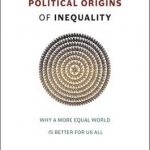
The Political Origins of Inequality: Why a More Equal World is Better for Us All
Book
Inequality is the defining issue of our time. But it is not just a problem for the rich world. It is...

Rooftoppers
Book
This is the winner of the Blue Peter Book Award and the Waterstones Children's Book Prize, and...
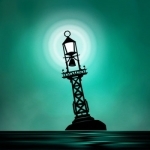
Sunless Sea
Games
App
LOSE YOUR MIND. EAT YOUR CREW. DIE. Failbetter’s award-winning PC game is now on iOS! Take the...
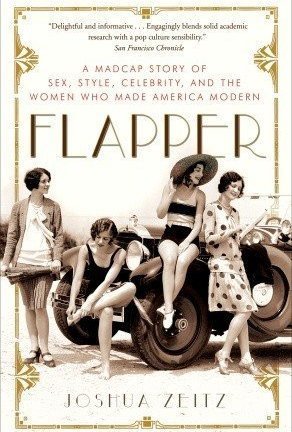
Flapper: A Madcap Story of Sex, Style, Celebrity, and the Women Who Made America Modern
Book
Blithely flinging aside the Victorian manners that kept her disapproving mother corseted, the New...
1920s
Merissa (13568 KP) rated Fagin's Boy (Oliver & Jack #1) by Jackie North in Books
Apr 21, 2022 (Updated Jun 24, 2023)
Jack has just returned to London after being hextricated to Australia. I had to suspend belief a little here as I've never heard of that happening before. He is still the cheeky chappie you may recognise but is altogether more fragile and hard. A paradox, for sure. He reminded me of a piece of flint.
Anyway, the story follows Oliver and Jack for a few months as circumstances change for Oliver. I thought the descriptions of the living conditions, plus how the children are treated in the workhouse, to be definitely in keeping with the original book by Dickens, as well as what was hinted at in the musical film.
Whilst Jack revelled in his circumstances, he was also desperate for stories about those he remembers. This leads him to a friendship with Noah, who Oliver doesn't like or trust. Oliver, on the other hand, wants more than he has right now. He wants his bookshop. He doesn't want to steal. He would like Jack to be with him but is prepared to make a break if Jack doesn't want to come.
There is a HFN ending to this first book and I am sure there will be plenty more adventures for our twosome. Although I have read and enjoyed other historical books by Ms North, I can't honestly say I enjoyed this one as much and I'm not sure why. All of the ingredients were there but, for me, they just didn't mix as well as I had expected. I am glad I have read this book and would recommend it to anyone with an interest in Oliver Twist and the hard, grimy Victorian times.
** same worded review will appear elsewhere **
* A copy of this book was provided to me with no requirements for a review. I voluntarily read this book, and the comments here are my honest opinion. *
Merissa
Archaeolibrarian - I Dig Good Books!
Apr 14, 2022
Debbiereadsbook (1608 KP) rated The Gentleman's Gentleman (His Lordship's Realm #1) in Books
Apr 27, 2024
This book kinda follows on from anoth series by this author called His Lordship’s Mysteries but it’s not necessary to read those before this one. While Dominick and Alfie are mentioned, and this book takes place in Balcarres House where they live, they take no part in it. I’ve read books one and two in that set, but not all the series.
I really enjoyed this book! Set in Victorian times, it comes with all the problems that being a man of a certain persuasion brings.
And it’s those problems that hold for much of this book. Given as the only way to save Jarrett from the noose is to put his own neck in it, Gil keeps quiet about seeing Jarrett the night that man in the chapel died at the hands of another. And it wrecks his head, it really does. His attraction to Jarrett has been bubbling under his skin for months but seeing him in the one place he never thought he would, brings that attraction front and centre.
Jarrett, on the other hand, found himself getting all tongue tied and flustered around Gil, even if he wanted to get his hands on the son of a baron, Jarrett knows that he never will, since he is just a lowly valet.
Things move quickly in places, and slower in others and I liked that I was able to take a breath before the next bit ran away with itself. Once things started to come together, though, there was no catching that breath and I did not know whodunnit til everything became clear in the book! So very well played for keeping me on my toes!
Both Jarrett and Gil get a say, so we get it all in glorious detail. How Jarrett feels about the man who gets him out of jail. How Gil feels about his family and about the man whose kiss he will never forget, and we get it all, when each man teaches the other about their way. I loved how different they both are!
A thoroughly enjoyable read! I really must go back and read the other stories about Alfie and Dominick.
4 very good stars
*same worded review will appear elsewhere
The Bandersnatch (199 KP) rated Dracula in Books
Nov 7, 2019
Dracula was published in London in May 1897 by Archibald Constable & Company and was later copyrighted in the U.S in 1899 and published by Doubleday & McClure of New York. Despite having decent praise form reviewers it wasn't an immediate bestseller. Although the English newspaper the Daily Mail ranked Stoker's writing prowess in Dracula above that of Mary Shelly, Edgar Allen Poe and Emily Bronte's Wuthering heights. Unfortunately it didn't make Stoker that much money and he'd had to petition for a compassionate grant from the royal literary fund. When he died his widow was forced to sell his notes and outlines of the book at an auction in 1913. It was the unauthorised adaption of Nosferatu by F. W. Murnau in 1922 and the resulting legal battle made when Stokers widow took affront that the novels popularity began to grow.
Before writing Dracula Bram Stoker had been researching European folklore and stories of vampires having been most influenced by Emily Gerard's “Transylvania Superstitions” 1885 essay...which included content about the vampire myth. Some historians insist that Vlad iii Dracula (More commonly known as Vlad the impaler) was the model for Stokers count but there's been no supporting evidence to make that true. According to one expert Stoker only borrowed the barest minimum of information of the Wallachian tyrant and he's not even mentioned in Stokers notes. Stoker was a member of the London library during the 1890's where books by Sabine Baring-Gould, Thomas Browne, AF Crosse and Charles Boner are attributed to Stokers research. Stoker would later claim he'd had a nightmare caused by over-eating crab meat about a “Vampire king” rising from his grave. Whitby on the Yorkshire coast contributed its landscape since Bram Stoker often holidayed there during the summer.
Dracula wasn't Stokers first choice as title for the story since he cycled through The Dead Un-Dead then simply the Un-Dead the count wasn't even supposed to be Count Dracula having had the name Count Wampyr for several drafts before Stoker became intrigued by the name Dracula. After reading “An account of the principles of Wallachia and Moldavia with political observations relative to them” written by author William Wilkinson (Published in 1820). the descendants of Vlad ii of Wallachia took the name Dracula or Dracul after being invested in the Order of the Dragon in 1431. In the old Romanian language the word Dracul mean “the Dragon” and Dracula meant “Son of the Dragon”. Nowadays however Dracul means “the Devil”
Whilst Dracula is known as THE Vampire novel its not the first. Johan Wolfgang Von Goethe had his book the Bride of Corinth published in 1797, 1871's Carmilla (a story about a lesbian vampire) was written by Sheridan Le Frau and James Malcolm Rymer's penny dreadful series Venny the Vampire was a product from the mid Victorian period. Even John Polidori created an image of a vampyric aristocrat in his 1819 story The Vampyre when he spent a summer with Merry Shelly (creator of Frankenstein) and her poet husband Percy Bysshe Shelly and Lord Bryon in 1816.
I really love Dracula. It showed the madness, the ethereal quality and the ultimate danger of what a vampire could do. Like many other goth inclined teenagers trying to find their feet in the world Dracula definitely added its two cents to my self worth and love of all things macabre. The fact it was written by a Victorian writer has added a unusual depth to the story as only a Victorian writer could. The culture of the Vampire has become deep rooted and wide spread in its acceptance and Dracula has definitely spearheaded such a phenomenon.
Abraham “Bram” Stoker was Born in Dublin, Ireland on the 8th of November 1847, He was the third of seven children born to Abraham and Charlotte Stoker and was bedridden with an unknown illness until he recovered at seven. He started schooling at a private school run by the Reverend William Woods and grew up without serious illness. Stoker excelled at sports at Trinity College Dublin having graduated in 1870 with a BA (Bachelor of Arts). He was an Auditor of the College Historical Society and the president of the University Philosophical Society where his first paper was on Sensationalism in fiction and society.
Thanks to his friend Dr. Maunsell, Stoker became interested in the theatre as a student and whilst working for the Irish civil service he became a theatre critic for the Dublin evening mail where he attracted notice for the quality of his reviews. Stoker gave a favourable review of Henry Irving's adaption of Hamlet in December 1876, this prompted Irving to invite him to dinner where they ended up becoming friends. Stoker wrote The Crystal Cup which was published by the London society in 1872 and The chain of Destiny which was released in four parts in the Shamrock. Stoker also wrote the non-fiction book the duties of clerks of petty sessions in Ireland which was published in 1879.
Bram stoker married Florence Balcombe the daughter of a lieutenent-colonel in 1978 and they moved to London. Where Stoker ended up the Business manager of the Lyceum theatre as well as manager for Henry Irving- a position he held for 27 years. Despite being a very busy man Stoker ended up writing several novels (as well as Dracula) Including The Snakes pass in 1890, the lady of the shroud in 1909 and the lair of the white worm in 1911. when Henry Irving died in 1906 he published his personal reminiscences of Henry Irving. Stoker also managed productions at the Prince of Wales theatre.
Bram stoker died after a series of strokes in London on April 20th 1912, the cause of death is split between the possibility of Tertiary Syphilis or overwork. He was cremated and was placed in a display urn at Golders Green Crematorium in North London, he was later joined by the ashes of his Son Irving Noel Stoker in 1961, his wife Florence was meant to join them but her ashes were scattered at the Gardens of rest.
Stoker was honoured with a Google Doogle (the banner on goggles homepage) on November 8th 2012 commemorating the 165th anniversary of his birth. An annual festival in honour of Bram Stoker happens in Dublin, its supported by the Bram stoker estate and was/is usually funded by Dublin City Council and Failte Ireland.
My opinion of Bran stoker is that of a decent hard working man who loved life. Stoker epitomises the phrases of “a man on a mission” and “a man who hussles”. Having worked extremely hard both creatively as a novelist and business wise as a theatre manager Stoker pretty much showed that if you work hard you could pretty much do anything you set your mind to.
And there you have it a book for all the ages, definitely under the banner of AWESOME!!!.
Kyera (8 KP) rated Clockwork Angel in Books
Jan 31, 2018
The clockwork automatons are intriguing, as they are made from neither Heaven nor Hell and thus the Shadowhunters have no experience dealing with them. They create a unique foe to fight against and are a greater mystery – as our heroes do not know who truly created them, or their nefarious purpose.
Each chapter is headed with an excerpt from a poem that Tessa might have found herself reading over the years. Each is not only a wonderful addition to the story but if you enjoy them, perhaps it will lead you to seek them out in their original forms. I personally do not find myself frequently reading poetry, but the first time I read this book I fell in love with the poems selected. It caused me to go in search of them and read poetry. Perhaps you too will find yourself inspired.
As with the Mortal Instruments, our main character is a female who is unfamiliar with the Shadow World at the beginning of the novel. Before long, she is completely embroiled in the world, the politics and must learn as she goes. In this novel, our heroine is given the Shadowhunter Codex to read which allows her to quickly understand the roles of the Shadowhunter and the world she didn’t even know existed. I have always liked Tessa and felt a kinship to her, as we are very similar.
Tessa is quite tall, especially for a woman in the Victorian era, brunette and loves books more than anything else (other than perhaps her family.) Her Aunt was a very learned woman, so Tessa received a decent education and fostered a love of reading. She is able to quote from books that she loves and does not discriminate between books considered high-brow and those considered for the lower class of society. Tessa is very intelligent and not afraid to voice her opinions, even though it was not widely accepted at that time for women to be sharp of tongue. She also does not like chocolate, which endeared her to me immediately as I also am one of the few people it seems who does not like chocolate.
Our two male leads are Jem and Will, who are parabatai but quite dissimilar from one another. Jem was originally from the Shanghai Institute but found himself in the London Institute when his parents were murdered by demons. He is quiet, kind, intelligent and loves Will like a brother. Will is a Herondale, with all of the charm that comes with it. He is more reckless, boasts about frequenting brothels and dens of vice, and despite his outward attempts to appear cheerful is prone to melancholy.
The Institute is filled with other Shadowhunters and servants with vastly different personalities who bring a lot of interesting storylines with them. Charlotte and Henry are the heads of the Institute, despite their young age. Henry is a brilliant inventor, although a bit scatterbrained. Jessamine was forced to live in the Institute after the death of her parents, but she has never desired to be a Shadowhunter.
The first book introduces us to the Shadow World of London, as Tessa is invited to travel from New York to London to live with her brother. Her plans do not turn out as she had expected and it leads her on an adventure with the Nephilim. It is fascinating to see how different the Shadowhunters of this era are, and yet utterly the same. It was also interesting to see how the Shadowhunters view the Downworld. While it was not entirely equal to the time of the Mortal Instruments series, you realize that is has improved in the century since the Infernal Devices and must be leagues above the treatment in the earliest years of the Nephilim.
Whether Clockwork Angel is your first foray into the Shadow World, or not, it is a highly entertaining and well-written novel that I could not recommend more. Many people feel that this series is the best of the three, so if you’ve been considering reading any of the Shadowhunter Chronicles but were not quite sure – perhaps this is a good place to start. I personally would recommend reading a number of the Mortal Instruments before beginning this series, but that is just my opinion. Either way, if you have not yet read this book – please go do so now! It is one of my favourites and I hope that it will be yours as well.
